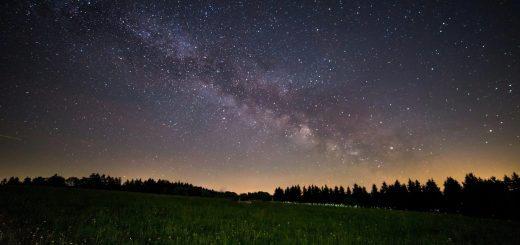How World Fairs Influenced Travel Destinations

Before diving in, please note: This post is for informational purposes only. If you’d like to know more about how we approach topics, feel free to check out our friendly Disclaimer Page.
Hey there, amazing readers! 🖐️ Just a quick note: yes, we know there are a lot of ads here. Trust us, we get it—it’s not the prettiest look, but they help us keep this blog alive and kicking. Those pesky little ads cover the costs of all the behind-the-scenes magic, from hosting and tech stuff to creating content we hope you’ll love.
We’re committed to delivering quality posts, and your support (even just sticking around despite the ads) means everything to us. So, bear with us, and thanks for helping us keep the good vibes rolling. Now, on to the fun stuff! 😉
TRANSLATE BUTTON AT THE END OF THE ARTICLE
A Quick Overview
World fairs, also known as expos, have been captivating audiences since the mid-19th century.
These grand exhibitions have not only showcased technological innovation and cultural treasures, but they’ve also played a significant role in shaping travel destinations around the globe.
From Paris to Chicago, the impact of these events extends far beyond their immediate locales.
As we dive into the influence of world fairs on travel, you might be surprised to see how these vibrant gatherings have transformed the way we explore the world.
The Allure of World Fairs: A Brief History
World fairs can trace their roots back to 1851, when the Great Exhibition was held in London’s Crystal Palace.
This monumental event showcased the industrial advancements of the time and set the stage for future expos.
Countries displayed their achievements, and visitors from all walks of life gathered to marvel at what humanity could accomplish.
In the following decades, world fairs became a platform for nations to boast about their progress and culture.
For example, the 1889 Exposition Universelle in Paris introduced the Eiffel Tower, now a symbol of the city.
The fairs continued to evolve, each featuring themes that reflected the spirit of the age, from the celebration of technological progress to the promotion of cultural exchange.
By the time the 20th century rolled around, world fairs had become a staple of international diplomacy and cultural pride.
Countries competed not just for prestige but also for tourism dollars.
Expos served as a stage for nations to present their best selves, sparking increased interest in the host cities and their surrounding areas.
Each event left a lasting imprint on travel trends and destinations.
From Paris to Chicago: Pioneering Travel Trends
Take a moment to think about the significant world fairs that have occurred in major cities.
The Exposition Universelle in Paris (1889) and the World’s Columbian Exposition in Chicago (1893) are prime examples.
These events didn’t just attract attendees; they became catalysts for travel.
The allure of Paris, with its stunning architecture and romantic ambiance, gained momentum from the 1889 expo.
The Eiffel Tower, initially met with skepticism, became a must-see landmark that drew travelers from around the globe.
In contrast, Chicago used its fair to transform a city often overshadowed by New York.
The fair showcased the Windy City’s potential, drawing tourists eager to explore its newfound vibrancy.
The influence of these fairs was profound.
They set trends in travel that encouraged people to explore destinations beyond their hometowns.
The fairs created a thirst for adventure, sparking an era where international travel became more than a luxury—it became a thrilling pursuit.
Showcasing Innovation: The Role of Exhibits
World fairs have always been a showcase of innovation.
From steam engines and electric lighting to modern-day technology, exhibitors have used these platforms to demonstrate the cutting-edge inventions of their time.
The 1964 New York World’s Fair introduced the Ford Mustang, forever changing automotive culture.
But it’s not just about the gadgets.
These fairs have also served as platforms for social issues.
The 1939 New York World’s Fair’s theme, “The World of Tomorrow,” highlighted advancements in technology alongside messages about peace and global unity.
Such themes have drawn visitors interested in both the advancements and the social implications behind them.
Discover "The Traveler’s Guide: Your Ultimate Companion for Every Adventure ✈️"
Travelers often seek destinations with rich histories of innovation.
Exposure to these exhibits can inspire visitors to explore cities that have played pivotal roles in technological and cultural evolution.
The allure of a city becomes intertwined with the stories and innovations showcased at these fairs.
Cultural Exchange: World Fairs as Global Gatherings
World fairs are remarkable for their ability to foster cultural exchange.
Attendees find themselves immersed in different cultures through pavilions, performances, and culinary experiences.
Imagine walking through the streets of a fair and tasting authentic cuisine from various countries all in one place!
These gatherings provide a unique opportunity for countries to present their culture on a global stage.
The 1967 Expo in Montreal featured a tapestry of cultural exhibits, sparking interest in Canadian culture and drawing travelers to explore its diverse regions.
This cultural immersion often leaves a lasting impression.
People tend to seek out destinations that represent the cultures they’ve encountered at these fairs.
The seeds of curiosity about different traditions are sown, leading travelers to explore beyond the familiar and embrace the diversity of our world.
Discovering New Destinations Through Expo Hubs
World fairs often shine a spotlight on lesser-known cities, turning them into travel hubs.
When a major expo is hosted, the city has a chance to showcase itself to a global audience.
For instance, the 1970 Expo in Osaka put Japan on the map for many tourists, who became curious about Japanese culture and landscapes.
These events spur infrastructure development, making the host cities more accessible and appealing.
Airports, hotels, and attractions often emerge or expand in anticipation of increased foot traffic.
After the fairs end, these improvements remain, ensuring that the cities can accommodate a surge of visitors for years to come.
Visitors who once might have overlooked a city may find themselves intrigued after hearing about its expo experiences.
They return home with stories to share, often inspiring others to consider these newfound destinations for their own adventures.
Architectural Marvels: Landmarks Born from Fairs
One of the most notable legacies of world fairs is the architectural wonders created for them.
The Crystal Palace in London, the Space Needle in Seattle, and the Atomium in Brussels—all were born from these events.
They serve as lasting symbols of innovation and creativity, drawing countless tourists.
These structures often become synonymous with their cities.
The Eiffel Tower is a prime example; it initially faced public criticism, but today it stands as a beloved icon.
The unique designs and bold concepts represented at world fairs have pushed architects to think outside the box.
Travelers often seek out these architectural marvels, eager to experience the stories and history behind their creation.
They become part of the travel narrative, offering visitors a glimpse into the spirit and ambition of the eras in which they were built.
The Rise of Tourism: How Fairs Sparked Interest
World fairs have played a pivotal role in the rise of tourism.
They acted as a springboard for the travel industry, helping to shape the modern travel landscape.
In the late 19th and early 20th centuries, people began to see travel as a means of exploration and adventure, rather than a luxury reserved for the elite.
The fairs created an insatiable appetite for international travel.
By showcasing the beauty and diversity of various cultures, they inspired people to embark on journeys of their own.
The 1939 New York World’s Fair, with its futuristic themes and attractions, drew millions, many of whom left with dreams of visiting other countries.
As travel became more accessible, the world began to open up.
Expo attendees returned home and shared their experiences, igniting a flame of curiosity in their communities.
This ripple effect spurred travel agencies, tour packages, and flight routes, turning travel into an aspiration for many.
Influential Themes: Shaping Travel Narratives
Each world fair has its themes, which often reflect the zeitgeist of the time.
For instance, the 1967 Expo was themed "Man and His World," pushing boundaries on what it meant to be human in a rapidly changing society.
Such themes shape travel narratives that resonate with visitors long after the events have ended.
These narratives influence the way people perceive destinations.
The themes often highlight the culture, lifestyle, and achievements of the host country, further enticing travelers.
When a theme sparks a sense of wonder, people are more likely to add those destinations to their travel lists.
Just think about how the themes of sustainability and innovation have gained momentum in recent years.
Expo 2020 in Dubai, held in 2021, focused on “Connecting Minds, Creating the Future.” This theme highlighted global collaboration, inspiring travelers to seek out experiences that reflect these ideals.
Lasting Legacies: Fairs That Changed Destinations
Some world fairs have forever changed their host cities.
The 1889 Exposition Universelle, with its introduction of the Eiffel Tower, transformed Paris into a global icon.
Similarly, the 1939 World’s Fair in New York City set the stage for the city’s reputation as a cultural and financial powerhouse.
These events leave behind a rich legacy that transcends time.
Host cities often capitalize on their expo histories, promoting themselves as destinations for future travelers eager to bask in their celebrated past.
Travelers often flock to these cities, drawn by the stories they’ve heard or learned about from friends, family, or media.
The resulting enthusiasm boosts tourism, creating a cycle of discovery and connection that endures long after the fairs conclude.
Local Economies: Boosting Tourism Through Events
World fairs have a significant positive impact on local economies.
The influx of visitors creates immediate financial benefits for the host city.
Hotels, restaurants, and attractions see a spike in business, often leading to job creation.
Consider the 1962 Seattle World’s Fair.
It not only spurred the construction of the Space Needle but also turned Seattle into a popular destination.
The fair brought in millions of visitors, revitalizing the local economy and encouraging growth in the tourism sector.
These events are often a strategic investment for cities.
They provide an opportunity to showcase local culture, cuisine, and attractions to an international audience, with lasting benefits for years to come.
The economic boost can lead to infrastructure improvements that make future travel experiences even more enjoyable.
Modern-Day World Fairs: A New Era of Exploration
While world fairs have evolved, their essence remains.
Today’s expos, such as Expo 2020 Dubai, offer new ways to experience culture, technology, and innovation.
They continue to be a platform for countries to showcase their advancements and foster global dialogue.
Modern world fairs emphasize sustainability and inclusivity, aiming to address contemporary challenges.
They explore topics ranging from climate change to social equity, engaging visitors in meaningful discussions.
These themes resonate with today’s travelers, who seek experiences that align with their values.
They inspire people to visit not just for leisure, but to learn and engage with pressing global issues.
As travel continues to evolve, the timeless spirit of world fairs will remain a guiding force.
Travel Inspirations: World Fairs and Your Next Trip
In the end, world fairs are more than just grand exhibitions; they’re gateways to exploration and adventure.
They ignite curiosity about different cultures and places, encouraging us to venture beyond our comfort zones.
So, whether you’re planning your next trip or dreaming about future adventures, consider how world fairs might inspire your travels.
Think about the stories behind iconic destinations and how expos contributed to their allure.
Next time you hear about a world fair or expo, don’t just think of it as another event—think of it as an opportunity.
An opportunity to broaden your horizons, meet new people, and discover the wonders of our diverse planet.
Pack your bags and let that wanderlust take flight!
Conclusion
World fairs have left an indelible mark on travel destinations worldwide.
They have shaped our perceptions, ignited our curiosity, and inspired countless journeys.
As we look to the future, let’s celebrate the spirit of exploration that these events encapsulate.
Every journey tells a story, and world fairs have given us many to share.
So, let’s continue to explore, discover, and be inspired by the wonders of our global community!

The Enlightenment Journey is a remarkable collection of writings authored by a distinguished group of experts in the fields of spirituality, new age, and esoteric knowledge.
This anthology features a diverse assembly of well-experienced authors who bring their profound insights and credible perspectives to the forefront.
Each contributor possesses a wealth of knowledge and wisdom, making them authorities in their respective domains.
Together, they offer readers a transformative journey into the realms of spiritual growth, self-discovery, and esoteric enlightenment.
The Enlightenment Journey is a testament to the collective expertise of these luminaries, providing readers with a rich tapestry of ideas and information to illuminate their spiritual path.
Our Diverse Expertise 🌟
While our primary focus is on spirituality and esotericism, we are equally passionate about exploring a wide range of other topics and niches 🌍📚. Our experienced team is dedicated to delivering high-quality, informative content across various subjects ✨.
To ensure we provide the most accurate and valuable insights, we collaborate with trusted experts in their respective domains 🧑🏫👩🏫. This allows us to offer well-rounded perspectives and knowledge to our readers.
Our blog originally focused on spirituality and metaphysics, but we’ve since expanded to cover a wide range of niches. Don’t worry—we continue to publish a lot of articles on spirituality! Frequently visit our blog to explore our diverse content and stay tuned for more insightful reads.






